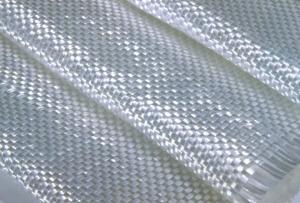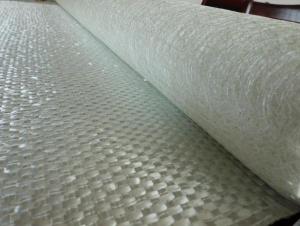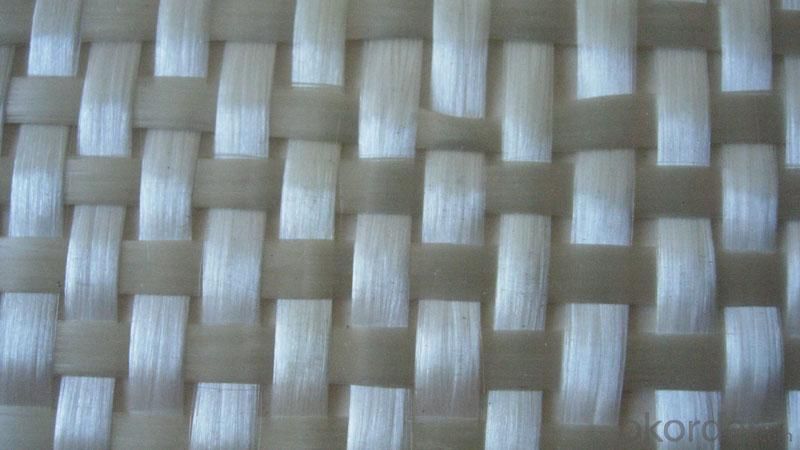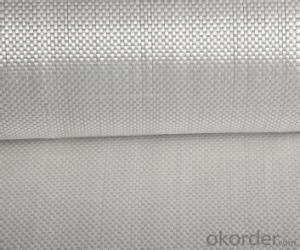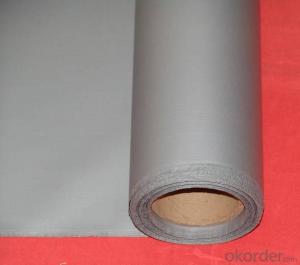Fiberglass Biaxial Fabric
- Loading Port:
- China Main Port
- Payment Terms:
- TT or LC
- Min Order Qty:
- 2Ton kg
- Supply Capability:
- 100Ton Per Month kg/month
OKorder Service Pledge
OKorder Financial Service
You Might Also Like
Application of Fiberglass Biaxial Fabric
Model: 100-200KN
Tensile Strength(KN/M): warp direction: aa100
Elongation: aa4%
Mesh Size: 25.4*25.4mm
Introduction of Fiberglass Biaxial Fabric
fiberglass biaxial fabric have excellent designable Character and great combination character with mat.
fiberglass geogrid is a kind of excellent geosynthetics for the reinforcement of road surface and basement.
Biaxial and multiaxial fabric consists of two or more layers roving fiberglass at different orientations (0, 90, +45, -45), which are stitched together by fine polymer yarn. Standard configurations include biaxial (0,90), (+45,-45), traxial(0,+45,-45) or (90, +45, -45) and multiaxial (0,90,+45,-45).Because of its excellent designable ability and great combination character with mat perfectly, it is omnipotent with any complex FRP/Composites products needing reinforcement. For instance, wind turbine blade,shipbuilding industry, auto industry, sports apparatus, medical apparatus, the furniture, etc.
Specification of Fiberglass Biaxial Fabric
| STYLE | MASS | MASS | LENGTH | WIDTHcm | WEIGHT | RESIN COMPATIBILITY |
EB450 (0/90) | 450 | 13.3 | 110 | 100 | 49.5 | UP or Epoxy resin |
EB600(0/90) | 600 | 17.7 | 80 | 100 | 48.0 | UP or Epoxy resin |
EB700(0/90) | 700 | 20.6 | 70 | 100 | 49.0 | UP or Epoxy resin |
EB800(0/90) | 800 | 23.6 | 60 | 100 | 48.0 | UP or Epoxy resin |
EB950(0/90) | 950 | 26.5 | 50 | 100 | 47.5 | UP or Epoxy resin |
EB1000(0/90) | 1000 | 29.5 | 50 | 100 | 50.0 | UP or Epoxy resin |
EB1200(0/90) | 1200 | 35.4 | 40 | 100 | 48 | UP or Epoxy resin |
EU400(45/-45) | 400 | 11.8 | 100 | 127 | 50.8 | UP or Epoxy resin |
EU600(45/-45) | 600 | 17.7 | 65 | 127 | 49.5 | UP or Epoxy resin |
ETW750(45/-45/90) | 750 | 22.1 | 50 | 127 | 47.6 | UP or Epoxy resin |
ETL800(0/45/-45) | 800 | 23.6 | 50 | 127 | 50.8 | UP or Epoxy resin |
EMU900(0/45/90/-45) | 900 | 26.5 | 50 | 127 | 57.2 | UP or Epoxy resin |
Note of Fiberglass Biaxial Fabric
Normally the width is 127cm,it can be cut to any width according to the customers requirements. We can also combinate the chopped strand mat.
Packing of Fiberglass Biaxial Fabric:
Each roll covered by polyethylene plastic bag,then placed into cardboard box. Cardboard box size: 1000mm×260mm×260mm,also can be set on pallet, Each pallet vertical stack 16 cardboard boxes which sizing: 1120mm×1120mm×1150mm.
Storage of Fiberglass Biaxial Fabric:
Product shall be placed under dryness condition and shall not be opened the covering membrane until applying.

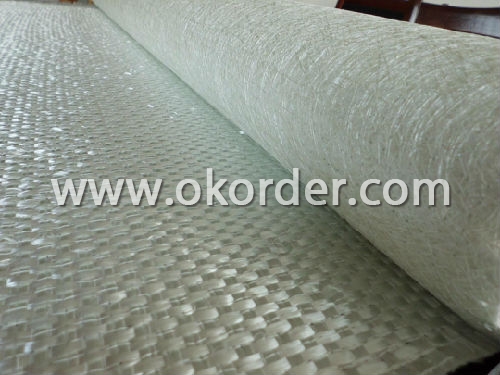
- Q: What is the advantage of coating waterproof layer with matrix reinforcing material?
- Since the matrix reinforcement material to absorb the paint, retained a part of glue, not to lower flow, but also increased the flow of glue down resistance, play the role of carrier. Therefore, the slope of the roof and facade in the film overlay non-woven fabric or fiberglass cloth, can play a solid glue, adhesive effect, especially some long curing time, low viscosity coating paving a layer of cloth, to ensure the construction quality of the film.
- Q: Do fiberglass fabrics require any special care or maintenance?
- Yes, fiberglass fabrics do require some special care and maintenance to ensure their longevity and performance. Here are a few important points to consider: 1. Cleaning: Regular cleaning is necessary to remove dirt, dust, and other debris that can accumulate on the fabric's surface. Use a soft brush or cloth to gently scrub the fabric, and avoid using harsh chemicals or abrasive cleaners that can damage the fabric. 2. Storing: When not in use, fiberglass fabrics should be stored properly to prevent any damage. It is recommended to store them in a clean and dry place, away from direct sunlight or extreme temperatures. Rolling the fabric instead of folding it can also help prevent creasing or wrinkling. 3. Avoiding sharp objects: Fiberglass fabrics are generally durable, but they can be punctured or torn by sharp objects. It is important to keep sharp objects away from the fabric and handle it with care to avoid any accidental damage. 4. UV protection: While fiberglass fabrics are inherently resistant to UV rays, prolonged exposure to direct sunlight can cause fading or degradation over time. To protect the fabric, it is advisable to use UV protective sprays or coatings, or to provide shading when used outdoors. 5. Repairing: If any damage occurs, it is important to address it promptly to prevent further deterioration. Small holes or tears can be repaired using specialized fiberglass patch kits or adhesive tapes. For larger damages, it is recommended to seek professional repair services. By following these guidelines, fiberglass fabrics can maintain their appearance and functionality for an extended period, ensuring that they continue to serve their intended purpose effectively.
- Q: What are the different widths of fiberglass fabric available?
- Fiberglass fabric comes in various widths, catering to different applications and project needs. The typical range of fiberglass fabric widths spans from 1 inch to 60 inches. Nevertheless, it's crucial to acknowledge that suppliers or manufacturers might provide alternative widths depending on their production capabilities and customer requirements. Moreover, custom widths are usually possible upon request. To ascertain the precise widths of fiberglass fabric offered, it is advisable to consult directly with a supplier or manufacturer.
- Q: How does fiberglass fabric perform in terms of fire resistance?
- The fire resistance properties of fiberglass fabric are well-known. It possesses a high melting point and does not easily ignite due to its composition of woven glass fibers. When exposed to flames, it does not burn or release harmful gases, making it suitable for applications where fire safety is of utmost importance. Furthermore, fiberglass fabric has the ability to self-extinguish, meaning that it stops burning once the heat source is removed. This characteristic aids in preventing the spread of fire and contributes to overall safety. In addition, fiberglass fabric has low thermal conductivity, meaning it does not conduct heat effectively. This property helps contain the fire and reduces the risk of its spreading. The fabric also acts as a barrier between the heat source and the surrounding area, minimizing heat transfer and providing protection to nearby materials. In conclusion, fiberglass fabric is highly esteemed for its exceptional fire resistance properties, making it a preferred choice in industries such as aerospace, automotive, construction, and firefighting.
- Q: Can fiberglass fabric be used in automotive applications?
- Yes, fiberglass fabric can be used in automotive applications. It is commonly used in various parts of the automotive industry, such as in the manufacturing of body panels, interior components, and insulation. Fiberglass fabric offers excellent strength-to-weight ratio, durability, and resistance to heat, making it suitable for automotive applications where lightweight and high-performance materials are required.
- Q: Is fiberglass fabric resistant to UV degradation?
- Yes, fiberglass fabric is generally resistant to UV degradation. Fiberglass is made from fine glass fibers that are woven together to form a fabric. These glass fibers possess inherent properties that make them highly resistant to the harmful effects of UV radiation. UV rays from the sun can cause degradation and discoloration of many materials over time, but fiberglass fabric is designed to withstand prolonged exposure to sunlight without significant damage. The glass fibers in the fabric are not affected by UV rays, making fiberglass fabric a durable and long-lasting material for outdoor applications. However, it is important to note that prolonged exposure to intense UV radiation can still cause some level of degradation over an extended period. Therefore, it is recommended to take appropriate care and maintenance measures, such as regular cleaning and occasional application of UV protectant coatings, to ensure the longevity of fiberglass fabric in outdoor settings.
- Q: Can fiberglass fabric be used for making surfboards?
- Yes, fiberglass fabric can be used for making surfboards. In fact, it is one of the most commonly used materials in surfboard construction. Fiberglass fabric is known for its strength, durability, and lightweight properties, making it an ideal choice for surfboard manufacturing. The fiberglass fabric is typically layered on the foam core of the surfboard and then laminated with resin to create a strong and rigid structure. This combination of materials provides the surfboard with the necessary strength to withstand the forces exerted by waves while maintaining flexibility for maneuverability. Additionally, fiberglass fabric allows for easy customization of the surfboard's shape and design, making it a popular choice among surfboard shapers and manufacturers.
- Q: What are the different fiberglass fabric finishes for antistatic properties?
- There are several different fiberglass fabric finishes that can provide antistatic properties. Some common finishes include carbon coating, metalized coating, and conductive polymer coating. These finishes help to dissipate static charges and prevent the buildup of static electricity on the fabric surface.
- Q: Can fiberglass fabrics be used for insulation purposes?
- Yes, fiberglass fabrics can be used for insulation purposes.
- Q: Can fiberglass fabric be used for insulation in underground structures?
- Yes, fiberglass fabric can be used for insulation in underground structures. It is a commonly used material for insulation due to its high thermal resistance and moisture resistance properties. Additionally, fiberglass fabric is lightweight, durable, and easy to install, making it suitable for underground applications where insulation is required to maintain temperature control and prevent condensation.
1. Manufacturer Overview
| Location | Shanghai,China |
| Year Established | 2006 |
| Annual Output Value | Above US$20 Million |
| Main Markets | Mid East;Western Europe;North America:South American |
| Company Certifications |
2. Manufacturer Certificates
| a) Certification Name | |
| Range | |
| Reference | |
| Validity Period |
3. Manufacturer Capability
| a) Trade Capacity | |
| Nearest Port | Shanghai |
| Export Percentage | 70% |
| No.of Employees in Trade Department | 200 People |
| Language Spoken: | English;Chinese |
| b) Factory Information | |
| Factory Size: | Above 400,000 square meters |
| No. of Production Lines | Above 15 |
| Contract Manufacturing | Average |
| Product Price Range | OEM Service Offered;Design Service Offered |
Send your message to us
Fiberglass Biaxial Fabric
- Loading Port:
- China Main Port
- Payment Terms:
- TT or LC
- Min Order Qty:
- 2Ton kg
- Supply Capability:
- 100Ton Per Month kg/month
OKorder Service Pledge
OKorder Financial Service
Similar products
Hot products
Hot Searches
Related keywords

